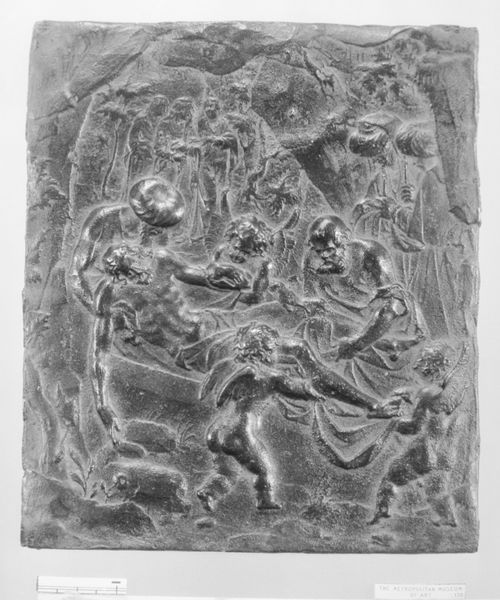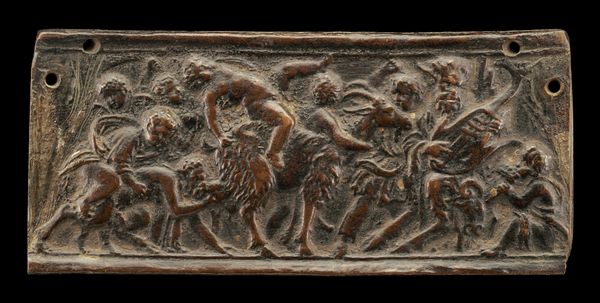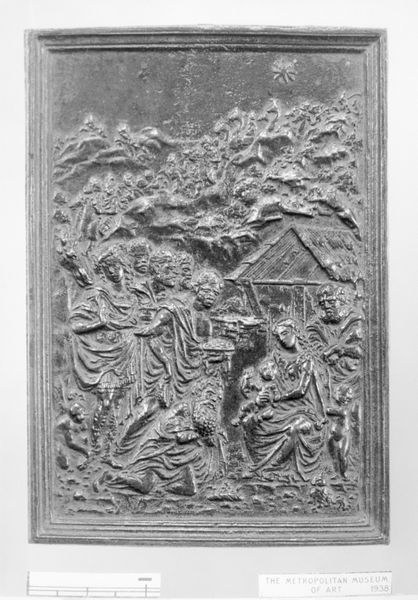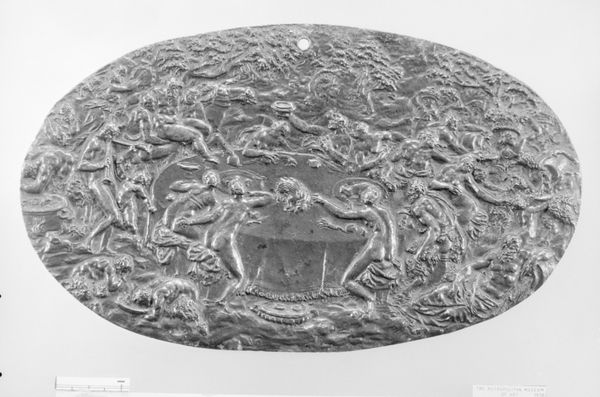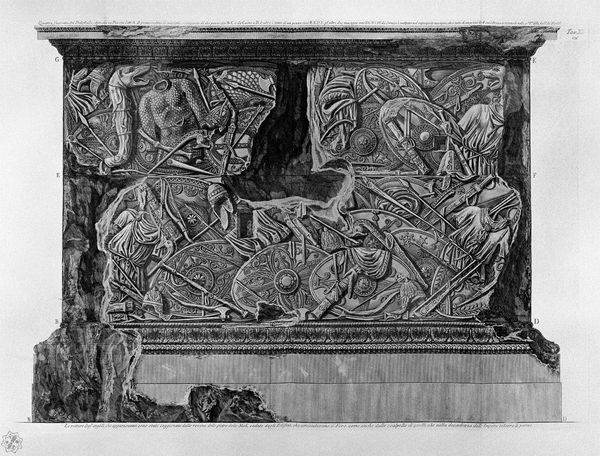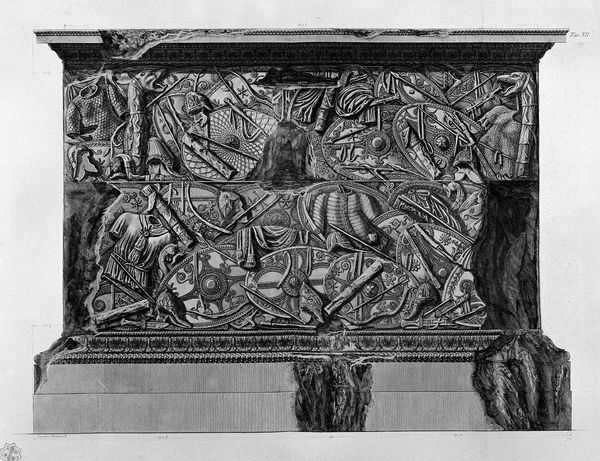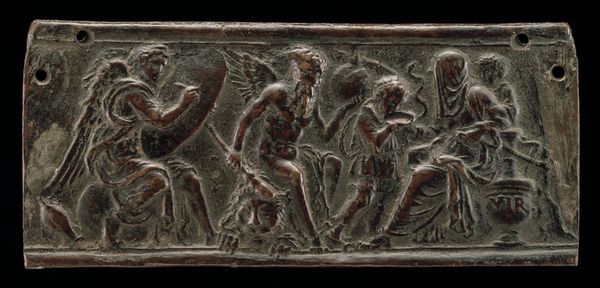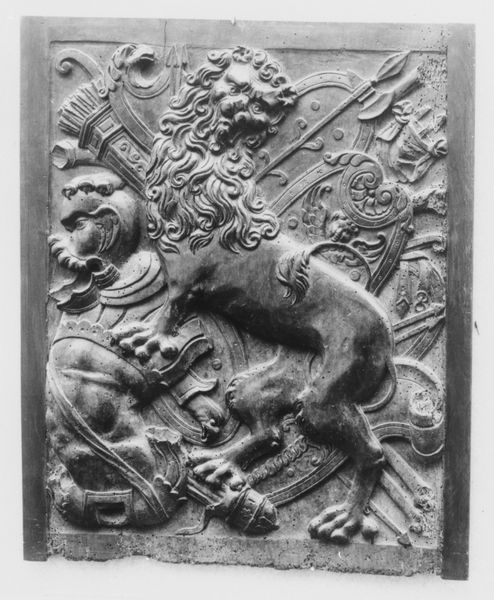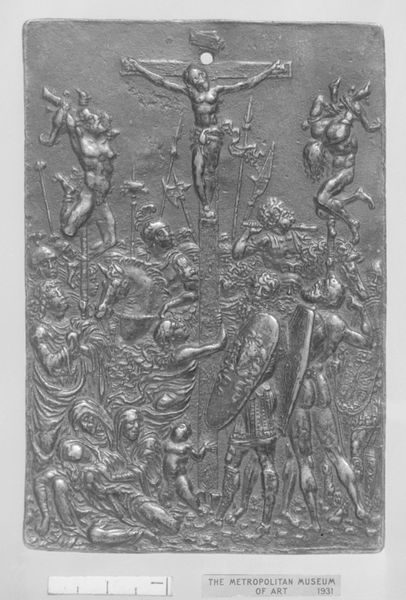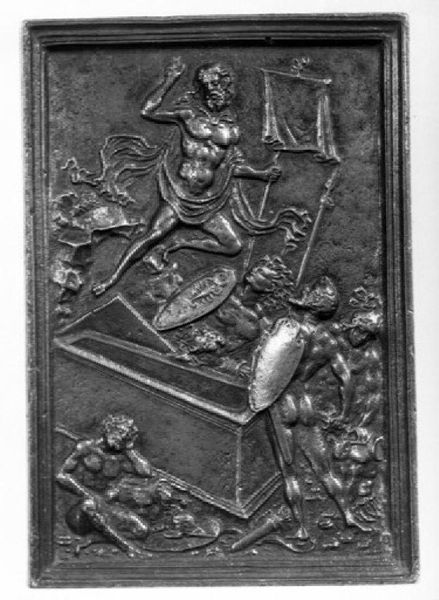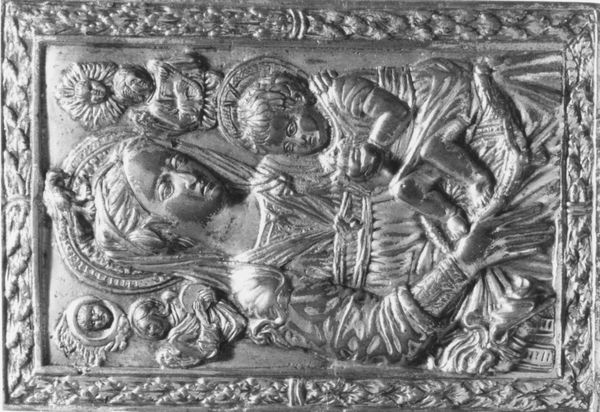
Metal plaque with Fudō Myōō and attendants Seitaka Dōji and Kongara Dōji 16th century
0:00
0:00
carving, metal, relief, sculpture
#
medieval
#
carving
#
metal
#
sculpture
#
asian-art
#
relief
#
figuration
#
sculpture
Dimensions: H. 18 in. (45.7 cm); W. 30 in. (76.2 cm)
Copyright: Public Domain
Editor: We're looking at a 16th-century metal plaque featuring Fudō Myōō with his attendants, Seitaka Dōji and Kongara Dōji. It’s a relief carving, and the figures seem to emerge from this dark metallic background. The expressions are fierce and really capture your attention. What do you see in this piece, especially in its historical context? Curator: What I see here is a powerful statement about the intersection of religious belief and social control in medieval Japan. Fudō Myōō, as the immovable wisdom king, was invoked not just for spiritual guidance but for protection in a turbulent political landscape. Consider the samurai class; they would have identified with his unwavering commitment to justice and order, which also makes me question how it reinforces patriarchal and feudal systems? Editor: That's interesting. So, this wasn't just about religious devotion; it had a socio-political dimension too? Curator: Exactly. The plaque becomes a symbolic representation of power and the upholding of a certain social hierarchy. The ferocity isn't just an expression of spiritual might; it reflects a need for rigid order during a time of constant upheaval. How do you think that ferocity plays out for contemporary audiences, particularly in relation to existing power dynamics? Editor: I hadn't thought about it like that, but I see your point. It makes me think about who was commissioning these works, and what messages they were trying to send. Curator: Precisely! And that line of inquiry then opens to explore critical perspectives about power, resistance, and identity formation during that time and how this piece functions as an ideological artifact, reflecting the social anxieties and aspirations of the period. Editor: Wow, I am seeing this in a totally new light. I had initially only focused on the artistic details and aesthetic. Curator: Which is totally fine! Now we're bringing the background into sharper focus. This really shows how much art history can tell us about society and how it all connects with philosophy and sociology. Editor: Absolutely, this has completely changed my perspective. Thank you.
Comments
No comments
Be the first to comment and join the conversation on the ultimate creative platform.

